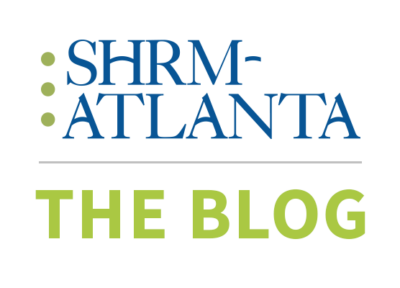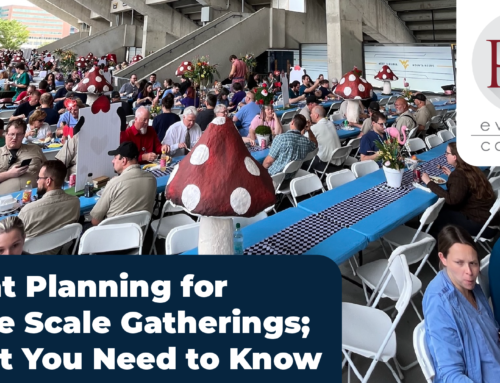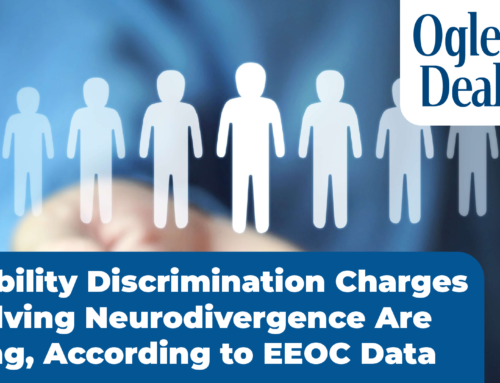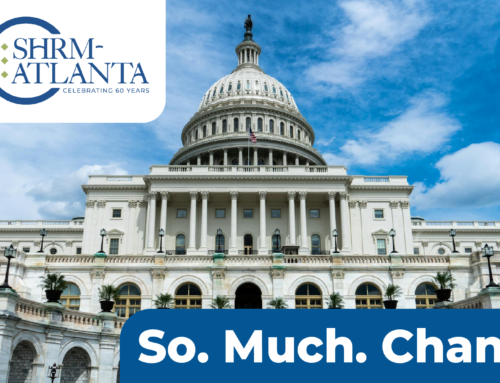What does market-leading employee engagement look like to you?
Most HR leaders reading this will have their own ideas about what makes for holistic employee engagement and game-changing employee experiences built for the modern workforce.
This will likely be based on a mix of sector-oriented experience combined with in-work employee expectations and buffeted by things like budget constraints and time-sensitive HR functionality. After all, money is finite, and business leaders cannot spend all their time administering performance reviews, feedback cycles and one-to-ones.
But the nature of work is changing. The Great Resignation – ushered in during the COVID-19 pandemic, and finding new forms in hybrid work models was a shot across HR functions for many organizations. And the ongoing struggle in talent acquisition and retention is indicative of a new age of stress-tested employee engagement.
In short, legacy employee engagement doesn’t work any more. The proof is in the pudding – incredibly high turnover rates in key industries that either didn’t adapt quickly enough or didn’t have the will, data-driven insights or leadership to pivot to new ways of working that attracted and curated healthy working environments.
In this context, “engagement” became a byword for “skills shortages mitigation.” Companies desperately threw whatever benefits and incentives they could at the wall, hoping something would stick. But the real heart and soul of employee engagement — for example, the use of data-driven insights to provide real-time feedback to actually tell staff if they’re good at their job — was underinvested in or simply forgotten.
So, where does that leave us today? We’re witnessing a new horizon of talent management built almost exclusively around engaged employees, and as a result, we’re seeing higher job satisfaction, less toxic work environments, and less hectic turnover.
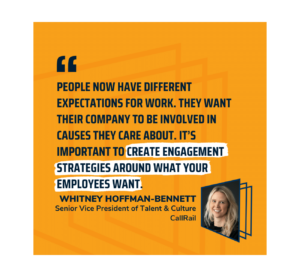 Listen to this episode of The Great Retention powered by Cooleaf at thegreatretention.com
Listen to this episode of The Great Retention powered by Cooleaf at thegreatretention.com
To that end, the best way to look at the future of work and what leaders can do to attract and retain talent is to look at the near-future HR trends affecting employee engagement. This article will explore the key priorities for employee engagement in 2024 and how businesses can leverage them to foster a motivated, connected, and highly performing human capital.
Streamlining Engagement Strategies
It’s fair to say that the world has gone through a digital revolution over the past few years. Artificial Intelligence is being utilized in every aspect of life, and in 2024 and onwards, one of the top priorities for organizations is and should be to consolidate existing manual processes into sustainable and easily accessible strategies.
But what does this mean in practice? In short, go digital and streamline processes through the power of automation.
This process involves integrating engagement initiatives with existing systems such as HRIS (Human Resource Information Systems) and various communication channels.
The advantage of such integration is manifold. For one, it allows for the seamless execution of employee engagement strategies, relieving HR professionals of unnecessary administrative work and enabling them to focus more on strategic decision-making.

It also paves the way for organizations to track and measure real-time engagement efforts. With automated metrics and analytics, businesses can gain a clear understanding of the effectiveness of their engagement initiatives and make data-driven decisions to enhance their efforts further.
Streamlining employee engagement and enhancing the employee journey means combining and utilizing multiple strands of employee contact, HR practice, and employee recognition under a single platform, with the intention of creating barrierless access to employee data instantly for maximum ROI and impact.
The end result is an improved employee experience, better HR budget management and increased productivity.
Building a United Workforce
To create a cohesive and motivated team, organizations are focusing on uniting employees around common goals, values, and missions.
But what does community mean in an increasingly disrupted, digital-first working world filled with technological advancements?
When more and more people are pushing for remote work, and flexible work arrangements as standard, the 4-day-working-week, job-sharing alternatives to fixed contracts and more hybridity in career paths, how is the idea of a company culture – and all the values contained within – evolving?
The answer is nuanced but indicative of the new normal we all live in. The lack of geographical boundaries creates global communities focused on common goals and professional alignment rather than near-shore necessity or the limits of captured domestic top talent access.
The rise of internal communications platforms such as Slack, Microsoft Teams, and built-in HR software branded communication channels are creating a platform for people worldwide to collaborate, ideate, share commonalities and successes, and challenge the very idea of what the working world should be.
The communities and friendships developed there are as real as any created in work, and if anything, the fostering of shared communities and team building works precisely because it’s borderless.
However, perhaps on a more personal level, workforces are pushing for more diversity, equity and inclusion (DEI) which not only connects people across physical boundaries but across mental and behavioral ones, too.
And as more and more biases get smashed against the progressive wall of change, workforces are uniting around opportunities, fairness, sense of belonging, and happiness for all, which is a lightning rod for community betterment and employee satisfaction.
Nurturing a Culture of Continuous Learning and Feedback
Feedback is the fuel for real employee engagement. But in 2024 and beyond, traditional feedback models – the yearly review, the bi-monthly “check in”, the weekly “scrum” will pass into the annals of HR history.
Instead, more organizations are shifting towards continuous organic feedback loops, which utilize all the above in the consistent hunt for process improvements.
But what does this mean in the trenches of day-to-day work? It simply means that whatever “output” comes from feedback is immediately and tangibly used as evidence for learning and development going forward.
Feedback should not be linear, out of context, or aimless – it needs to be actively focused on the next stages: positive mental health and happiness, iterative improvement, and employee performance.
This is the soul of good employee engagement and the foundation of a solid, sustainable company culture.
Think of your daily/weekly/monthly check-ins, effective and meaningful peer recognition, real-time performance assessments, and combine them with data-led analysis of wider company performance to continually affirm good work and highlight poor performance in real-time to get more immediate positive outcomes.
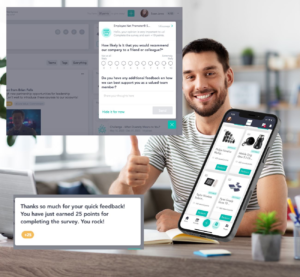
Connecting the Dots Between Reducing Attrition and Elevating Engagement
It’s a well-known fact in HR that one of the most tangible and powerful facets of great employee engagement is the reduction in staff turnover.
High levels of talent attrition often erode staff confidence, company cohesion and employee well-being, thereby exacerbating turnover, and so on and so forth.
The reverse is also true – a workplace free of toxicity, that values good mental health, that’s supportive and celebrates performance in the right way benefits from a high-performance team and positive employee well-being, which encourages others to perform better, thereby improving group performance, and so on and so forth.
As any right-thinking HR pro knows, good employee engagement isn’t just about creating a positive work environment or keeping hold of great staff; it’s also directly tied to ROI, performance results, and a sense of sustainable company performance that stands up against shocks to the system.
All of these things support and impact the other, and whilst the link between engagement and turnover is clear and should be prioritized, they are two pieces of a multifaceted whole.
So remember: connecting the dots between valuing teammates, engagement, and business performance can reduce attrition and improve bottom-line results.
The Technology of Engagement
Technology is reshaping how organizations engage with their workforce, from AI-driven surveys to remote employee communication platforms.
We’ve mentioned above that connecting the data dots across boundaries is a vital part of creating fully visible HR functionality, and to this end, novel, cloud-based SaaS platforms are leading the way as the engine rooms of data analysis.
These platforms, such as Cooleaf, combine digitally collated data with workplace deliverables and peer-reviewing to create a complete, bias-free performance management and employee engagement system.
In short, tech is how employers stay ahead of employee engagement expectations, and the best HR leaders understand how tech drives engagement improvements.
The Future of Employee Engagement
Employee engagement sits at the core of people management and forward-thinking HR stewardship.
It’s important to note, that all of the above points are not meant to be used in isolation. They point to a new, totalizing culture of healthy employee experience, continuous learning, staff macro-management and encouragement, built on a new foundation of tech tools but focused more than ever on the very human element of employee engagement.
Employee feedback can provide context for learning and getting better at your job, and modern engaging leadership is built on understanding how data, performance and feedback intersect.
Playing it too safe with employee engagement will only create dysfunctional disruptions in the modern era. The digital age has created a new set of rules around employee expectations, the immediacy of connection and contact, and data-led feedback – so use them!
Interested in leveraging technology to boost your organization’s employee engagement? Cooleaf offers a cutting-edge employee recognition and engagement platform that integrates seamlessly with your existing HR systems.
So, sign up for a demo today, and explore how Cooleaf can redefine your approach to employee engagement.
